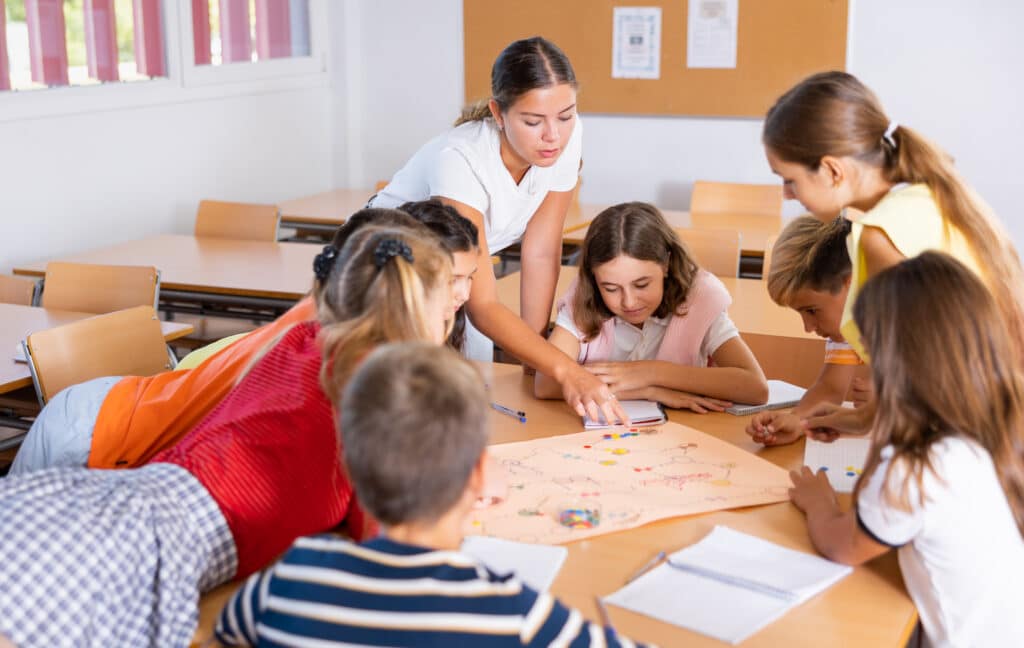trauma responsive & healing centered - Informing
Learning Playlists > Trauma Responsive & Healing Centered – Informing
Creating a trauma-responsive and healing-centered school culture begins with cultivating self-awareness, individually and collectively. Research shows that when educators understand the impact of trauma on the brain and learning (Perry & Szalavitz, 2017), engage in reflective practice to build emotional resilience (Jennings, 2015), and shift from trauma-informed approaches to healing-centered engagement (Ginwright, 2018), they are better equipped to foster environments of safety, connection, and growth.
This Informing playlist supports schools in refining their practices and expanding their collective understanding of resilience and healing. This stage encourages deeper reflection on how personal and organizational habits influence school culture by focusing on applying trauma-informed strategies. Schools engage in collaborative learning, examine case studies, and adapt tools to align with their community context, strengthening both individual insight and collective commitment.
These resources focus on building an understanding of the shared goals as well as difference between the concepts of trauma responsive and healing centered. The resources here focus on the importance of self-awareness in this work, and how to develop self-awareness. Click here for our Action Planning Guide to help you through the process of creating an action plan that will help your school move towards becoming a more resilience-supportive school community.

The TRS-IA is an evidence-informed self-assessment that comprises eight key domains of trauma-responsive schools and districts. It encompasses 8 domains: 1) whole school prevention planning; 2) whole school safety planning; 3) whole school trauma programming; 4) target trauma-informed programming; 5) prevention/early intervention trauma programming; 6) classroom strategies; 7) staff self-care; 8) family and community engagement. Click here for the Assessment Guide to help your team through this process.
You can take the CARE Assessment on the RSSI site at www.rss-illinois.net. Download a copy of the assessment here. For more information about the School Mental Health Quality Assessment, visit the SHAPE System at the National Center for School Mental Health by clicking here.
- 30 minutes

This course provides foundational knowledge around trauma and its impact on students and their communities. While we use the words “student” and “schools” here, this information can easily be applied to out-of-school environments too, such as afterschool organizations and early childhood programs. This course will help learners: understand how trauma impacts students’ learning and behavior in order to develop a “trauma lens;” identify common symptoms of trauma that occur in a school setting; increase your awareness of the impact of exposure to secondary trauma and the need for self-care and collective care among school staff.
Click here to go to the course.
- 90 minutes

The Cultivating Resilience in Schools toolkit is intended to be used by school-based leadership teams, which include representation across all areas and key collaborators, to establish systems and structures for building resilient schools and learning communities. It should be used in consideration of contextual, cultural, and social factors unique to each organization and everyone within the organization. Its comprehensive approach help makes connections and authentic relationships among educators, students and families, and promote positive school climate and culture, with an emphasis on classroom culture, safety and wellness.
- 45 minutes
-
Developing Teacher Resilience and Resilient School Cultures (research article)
- 15 minutes
Teacher resilience in a pandemic is a timely topic for America’s superintendents. This literature review focuses on teacher resilience and retention, with relevance for building resilient school cultures. The question guiding analysis of studies was, “What factors and processes contribute to teacher resilience and the ability to overcome adversity?” Findings were that individual and contextual factors of resilience impact teachers’ ability to persevere, as well as schools’ capacity to retain novice teachers. Resilience is associated with retention, job satisfaction, and other positive outcomes. Actions for developing teacher resilience and resilient school cultures are identified. K–12 teachers who attend to factors of resilience can better adapt and overcome adversity. School district leaders who encourage teacher resilience can foster resilient school cultures

- 8 minutes
When examining building and district-wide practices, it is common for ratings in all four of the categories. The goal of this worksheet is to identify both your areas of strength as well as those areas still in need of improvement. As you
reflect on each category and definition, there is a space provided to allow you to document your current practices either as an individual, building, or district with the ultimate goal of becoming trauma invested.
The book, Fostering Resilient Learners, presents case studies, research, stories, and practical, easy-to-implement strategies to help students living with trauma thrive in the classroom. The book includes strategies to help education professionals build strong relationships and create a safe space to enable students to learn at high levels, and adopt a strengths-based approach that helps professionals recalibrate how destructive student behaviors are viewed and to perceive what students need to break negative cycles. Check out the website for lots more information. www.fosteringresilientlearners.org
Click here for this worksheet.
- Five Strategies to Cultivate Belonging in the Classroom (reading)

- 5 minutes
This educator discusses how if students feel anxious socially, they will not be open to taking academic risks, so building a culture of belonging has become his greatest priority. He clarifies what he means by “belonging;” it’s not about “fitting in”—students’ individuality and uniqueness should always be valued. Belonging in the classroom means ensuring that all students feel welcomed, comfortable, and part of the school family. These five strategies can help ensure that students feel they belong in your classroom. These five strategies can help ensure that students feel they belong in your classroom.
5 Strategies to Cultivate Belonging in the Classroom | Edutopia
- Building Resilience and a Trauma-Informed School with the NC Center for Resilience & Learning

Baskerville Elementary is a public school located in North Carolina, in a small city setting that has seen many natural disasters in the past few years. Reada bout how their principal sought buy-in from the school community to create a trauma-informed school. A Resilience Team was built with leaders of the school to take the next step beyond training and awareness and begin to implement trauma-informed change and strategies school-wide. heck out additional learning and resources from the NC Center for Resilience and Learning.
- 10 minutes

Many educators are fighting against criminalizing students and are using trauma-informed and restorative justice practices to shift paradigms. Trauma-informed practices must be intentional and focused on emotional calm and stability for students during a time of community trauma. For this change in thinking, educators must realize how the punitive discipline actions demanded of them are harmful.
Decarceration Begins With School Discipline Reform | Learning for Justice
- 10 minutes

- 25 minutes
The Trauma-Informed, Resilience-Oriented Schools Toolkit from the National Center for School Safety outlines a framework for implementing these approaches in any school or school district. It utilizes tools, videos, professional development slide decks, and concise instruction to explain the concepts of trauma and toxic stress, offers individual
and school-wide strategies for addressing trauma and fostering resilience for students, staff, and families, and to assess the impact of these adaptations throughout the school community. The sections’ topics are presented in the order your school or district will likely start to address them. Sections 1 through 3 in this toolkit for the Informing level of work, which focus on: an introduction to trauma and trauma-Informed, resilience-oriented schools; practices and processes; and building a culture of staff compassion and resilience.

